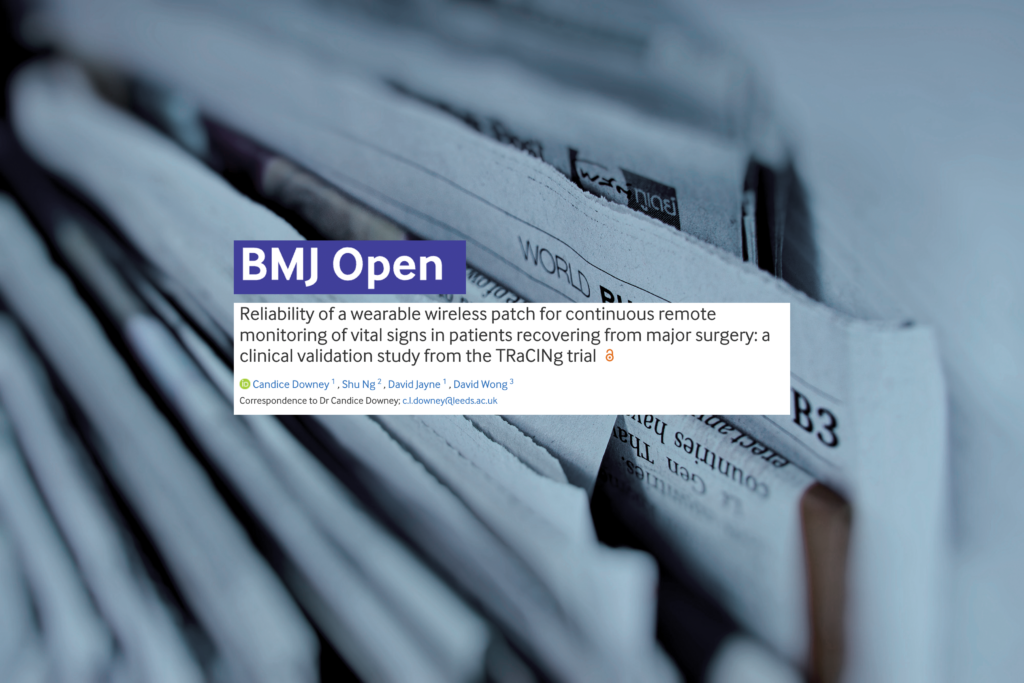
Publication list and references
Download the most recent list of summaries and extracts on the Senium© system to have all our evidence in one place. References from our website can be found below.
Bekijk artikel
As part of a larger TRaCINg study, researchers aimed to validate whether a wearable remote vital signs monitor could accurately measure heart rate (HR), respiratory rate (RR) and temperature in a postsurgical patient population at high risk of complications.
Downey C, Ng S, Jayne D, Wong D. 2019;9(8):e031150. BMJ Open
This publication is a retrospective analysis comparing manually recorded vital sign data with data recorded by a remote vital sign monitor (Sensium Vitals) on a population of 51 patients. The main aim of the TRaCINg study was to determine the feasibility of performing a large-scale randomised controlled trial of continuous remote monitoring after major surgery.
The primary outcome measure was 95% limits of agreement between manually recorded and wearable patch vital sign recordings of heart rate (HR), respiratory rate (RR) and temperature.
Results concluded that there was a reasonable correlation between nurse observations and patch recordings for HR but a low correlation for RR and temperature.
The study states that ‘It is not clear whether there were errors in the manual observation, in the vital sign patch, or both.’ The study also notes that distributions of RR in manually recorded measurements were clinically implausible. This is consistent with other research1 that states ‘Research has shown that routinely performed measurement of the vital parameters by the (nursing) staff is not always reliable. It is not surprising that the routine measurements have a very poor agreement with the data obtained by the continuously measuring patch.’
Other research2 has evaluated Sensium RR in the context of the number of valid readings, finding valid reading 75% of the time (25% higher than the studies defined feasibility of adequate RR.)
The paper comments that ‘The high bias between the nurse-measured temperatures and the patch data can be explained by the difference in measurement techniques.’ Sensium states that patch temperature is directly measured by an accurate (0.1 degree) temperature sensor placed in the axilla, and the measured value is directly reported. Manual observations are recorded using a tympanic thermometer, which uses an algorithm to estimate core temperature from the tympanic reading. The difference in measurement sites (axilla versus tympanic/core) will give an offset of up to 1 degree, although the axilla temperature should track changes/ trends in core temperature adequately [8], which equates with the findings of the study. The study highlighted some periods when Sensium reported “clinically implausible fluctuations of up to 2 degC within 2 hours”. These fluctuations are due to the temperature sensor being only loosely situated in the axilla, causing the sensor to move out of place and essentially measure ambient/skin temperature. This misplacement can be due to incorrect attachment of the sensor, or may occur in patients who are very thin with hollow axilla (particularly the elderly).
